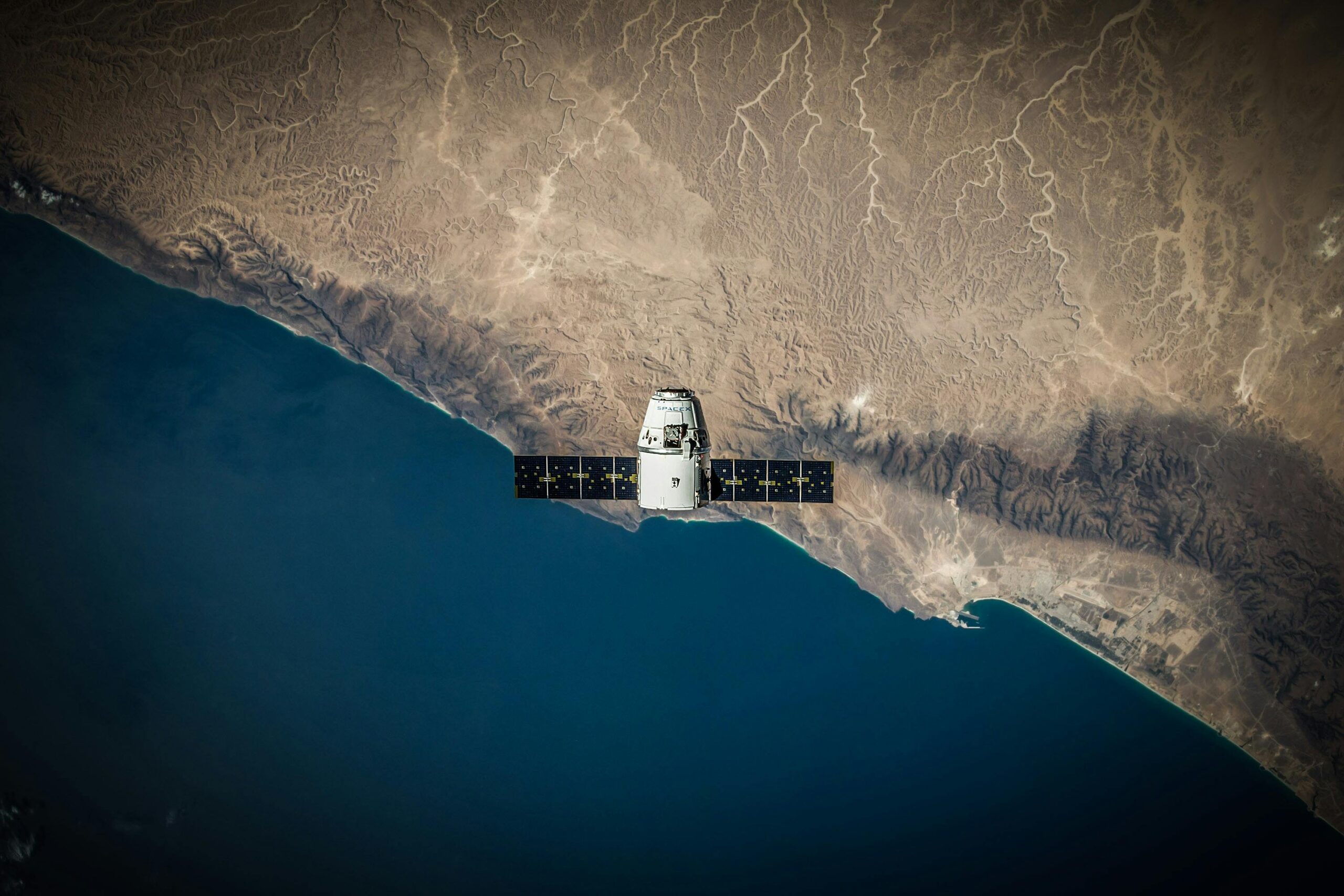The space industry is experiencing an unprecedented transformation, fuelled by rapid advancements in technology, strategic collaborations, and increasing investments.
As we head towards 2025, the Farnborough International Space Show team is exploring the key trends defining the commercial and defence sectors of the space ecosystem and the impacts they will have on shaping the future.
Proliferation of Small Satellites
Small satellites, also known as ‘smallsats’, are revolutionising the space industry. These relatively new pieces of technology, often weighing less than 500 kg, offer cost-effective and flexible solutions for a variety of applications, from Earth observation to telecommunications. In 2025, we are anticipating the deployment of smallsats to increase due to their lower launch costs and the ability to deploy constellations that provide global coverage for both civil and military applications.
Larger satellites are expected to account for ‘only 7% of the total number of satellites. This reflects the diversity of use cases, orbits, performance needs, mass, and form factors.’
Key Impacts:
- Enhanced global communication networks.
- Improved disaster management and environmental monitoring.
- Increased access to space for educational and research purposes.
Commercial Space Tourism
Space tourism is no longer a distant dream. Companies like SpaceX, Blue Origin, and Virgin Galactic are pioneering efforts to make space travel accessible to private citizens. In 2025, we will witness regular suborbital and orbital flights carrying tourists, marking the beginning of a new era in commercial space travel.
Key Impacts:
- Development of spaceports and related infrastructure.
- Growth in the space tourism market, attracting investments.
- Innovations in space travel safety and experience.
Read more about Polaris Dawn, the first commercial spacewalk that took place in September 2024.
Space-Based Manufacturing and Resource Utilisation
The concept of manufacturing in space is gaining traction. Microgravity conditions allow for the creation of materials and products that are difficult or impossible to produce directly on Earth. Additionally, the extraction of resources from celestial bodies like asteroids and the Moon is becoming a viable industry.
Key Impacts:
- Development of new materials and pharmaceuticals.
- Reduced costs for long-term space missions.
- Stimulated research and development in resource extraction technologies.
- Increased military presence and defense initiatives.
Defending A New Domain & Public-Private Collaboration
As we have seen over the last few years, the defence sector is placing a greater emphasis on space as a strategic domain. Nations are developing capabilities to protect their assets and interests in space, leading to the establishment of space forces and the enhancement of satellite defence mechanisms. This has led to more collaboration between private companies and government agencies and is proving to be a powerful driver of innovation. We expect this to be the main objective of industry leaders in 2025. These partnerships are enabling ambitious projects, such as the development of next-generation launch systems and deep space exploration missions.
Key Impacts:
- Advancements in anti-satellite (ASAT) technologies.
- Increased cybersecurity measures for space assets.
- International collaboration and treaties focused on space security.
- Accelerated technological advancements and mission timelines.
- Increased funding and resource sharing for space projects.
- Enhanced capabilities for national and global space objectives.
AI and Automation in Space Missions
Artificial intelligence (AI) and automation are becoming integral to space missions, from satellite operations to interplanetary exploration. The use of autonomous spacecraft and AI-driven data analysis will be accelerated in 2025, enhancing mission efficiency and reducing the need for human intervention.
Key Impacts:
- Increased mission success rates and reduced operational costs.
- Enhanced data processing capabilities for scientific research.
- Development of autonomous systems for long-duration space missions.
Expansion of Lunar and Martian Exploration
Lunar and Martian exploration efforts are intensifying. NASA’s Artemis program aims to establish a sustainable human presence on the Moon, while private companies and international partners are also focusing on lunar missions. Mars continues to be a target for future human exploration, with ongoing robotic missions paving the way into next year.
Key Impacts:
- Development of infrastructure for human habitats on the Moon.
- Technological advancements in life support systems and habitats.
- International collaboration in space exploration efforts.
Sustainability and Space Debris Mitigation
As space activities increase, so does the concern over space debris. Efforts to mitigate space junk and promote sustainable practices are becoming critical. Technologies for debris removal and satellite end-of-life management are being developed and implemented.
Key Impacts:
- Enhanced safety for space operations and assets.
- Regulatory frameworks for sustainable space activities.
- Innovations in debris tracking and removal technologies.
The space industry in 2025 will be characterised by rapid advancements and expanding horizons. From the proliferation of small satellites to the international collaboration between the public and private sectors, each trend is contributing to a more interconnected and ambitious space landscape.
As the industry and its sectors continue to evolve, the integration of cutting-edge technologies, in addition to regulated sustainable and safe practices will be key to shaping the future of space exploration and global utilisation.
Are you interested in pioneering the commercial space sector and advancing space domain defence? Join the global space community at the Farnborough International Space Show (FISS), taking place 19-20 March 2025 in Hampshire, UK. Find out more about exhibiting today and stay turned for news very soon about attending FISS!


